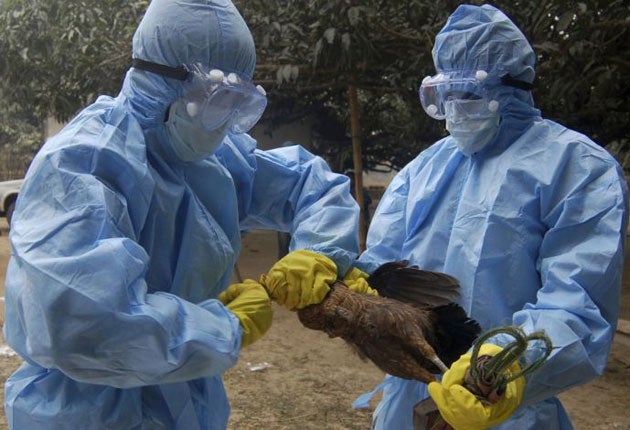H5N1 virus research: It’s a small risk, with a lethal implication
The strain of flu is difficult to transmit from person to person through air droplets

Your support helps us to tell the story
From reproductive rights to climate change to Big Tech, The Independent is on the ground when the story is developing. Whether it's investigating the financials of Elon Musk's pro-Trump PAC or producing our latest documentary, 'The A Word', which shines a light on the American women fighting for reproductive rights, we know how important it is to parse out the facts from the messaging.
At such a critical moment in US history, we need reporters on the ground. Your donation allows us to keep sending journalists to speak to both sides of the story.
The Independent is trusted by Americans across the entire political spectrum. And unlike many other quality news outlets, we choose not to lock Americans out of our reporting and analysis with paywalls. We believe quality journalism should be available to everyone, paid for by those who can afford it.
Your support makes all the difference.Accidents do happen. This is the warning given in a letter to the European Commission from more than 50 eminent scientists who take issue with some of the researchers conducting research on the H5N1 bird-flu virus.
So far, this virus has only infected a few people because, unlike the ordinary seasonal flu, the H5N1 strain is difficult to transmit from person to person through air droplets. However, more than half of those infected with H5N1 have died – making it potentially more lethal than the 1918 pandemic flu that killed tens of millions.
We are protected against H5N1’s high lethality by its low infectiousness. Knowing what it takes to make H5N1 more transmissible, particularly the mutations that enable it to go “airborne” between people, is the subject of experiments now underway in the US and the Netherlands.
These studies are carried out on laboratory ferrets, the best animal model of human influenza. Not surprisingly, the research is highly controversial. Perhaps the biggest fear is an accidental release from a laboratory doing this work, even with all the bio-containment safeguards.
Accidental releases of dangerous pathogens from laboratories have happened before. A 1977 outbreak of H1N1 after a 20-year hiatus was believed to have been the result of an accident at a laboratory in the former Soviet Union.
The risk of an accident is real, albeit small, but the consequences – a lethal flu pandemic – would be enormous.
Steve Connor is the Independent's Science Editor
Join our commenting forum
Join thought-provoking conversations, follow other Independent readers and see their replies
Comments